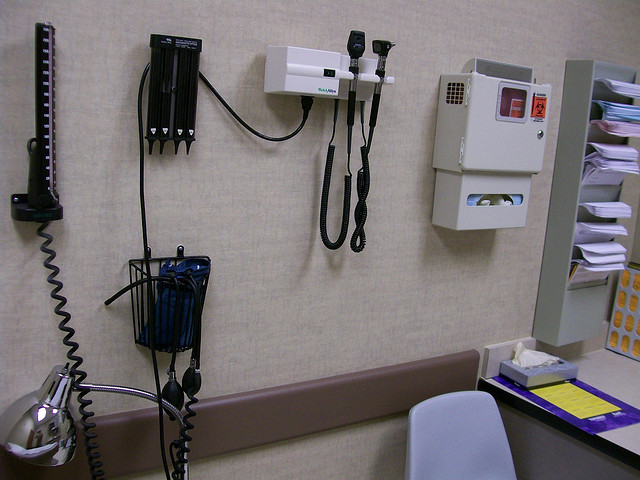If the unknown creates anxiety, then a visit to the hearing specialist is particularly stressful. While the majority of us have experience with the family physician and the hometown dentist, the trip to the hearing specialist could be a first.
It certainly would be useful to have someone summarize the process upfront, wouldn’t it? Well, continue reading, because as you’ll see, the process of getting your hearing evaluated is commonly straight forward, comfortable, and pain-free — with portions that can actually be fun.
So here’s how it will go:
As soon as you arrive at the office, you will check in with a staff member at the front desk who will hand you a few forms to fill out. Soon after finishing the forms, a hearing specialist will come with you into a room to begin the hearing examination, which consists of four parts:
Part 1: Case History

The hearing specialist starts off the process by getting to know you, your health history, and your hearing loss symptoms. Getting ready for this step is important, because this is where you get to relay to the hearing specialist the specifics of your hearing loss, what you hope for from treatment, and your specialized hearing needs.
This part is all about you: what do you want to achieve with superior hearing? Do you want to play a music instrument again? Do you want to be more active in work meetings? Do you want to be more lively at social gatherings? The more you can convey to your hearing specialist the better.
Next comes the testing.
Part 2: Otoscopy
The initial diagnostic test to be carried out is known as an otoscopy. An otoscope is used to visually examine the ear canal and eardrum to check if your hearing loss is linked with infections, earwax buildup, or blockages. If the cause of your hearing loss is something as simple as earwax buildup, you could most likely begin hearing better within a matter of minutes simply from expert earwax removal.
Part 3: Tympanometry
The second test is referred to as tympanometry, used to test the eardrum and middle ear. A gadget is inserted into the ear that will vary the air pressure, measuring how your ear reacts to a variety of pressures.
To fully grasp this test, you have to first know that hearing loss is categorized into one of two general classes:
- Sensorineural hearing loss — this is the most common hearing loss. It is also identified as noise-induced hearing loss and it involves injury of the nerve cells of hearing.
- Conductive hearing loss — this hearing loss results from clogging or obstructions that limit sound transmission before the sound gets to the nerve cells of hearing.
Tympanometry is a test that can help to rule out conductive hearing loss, to make sure that there are no blockages, infections, or middle-ear-bone ailments. Conversely, Audiometry, which is tackled next, will quantify sensorineural hearing loss.
Part 4: Audiometry
The final group of tests will be completed in a soundproof room. These tests are collectively known as audiometry and will assess your hearing range and sensitivity. Audiometry is the best approach to quantify sensorineural hearing loss.
With the use of an audiometer, the hearing specialist will be prepared to determine:
- Which frequencies you can hear comfortably and which you have trouble with.
- The minimal decibel levels, at a range of frequencies, at which you perceive sound.
- The precise measurements connected with your hearing loss (as captured on an audiogram).
- Your capacity to comprehend speech, with or without background noise.
The test itself, from your outlook, will be comfortable and very simple. You will be presented with sounds and speech through headsets and will be instructed to reveal when you can hear the sounds by pressing a device or lifting your hand.
Assessing results and planning treatment
Shortly after the testing is complete, your hearing specialist will talk about your results with you. If your hearing loss necessitates medical or surgical treatment (due to infections or middle-ear-bone problems, for instance), your hearing specialist can make the appropriate referral.
If your hearing loss can reap benefits from assistive listening devices or hearing aids, your hearing specialist will work with you to find the perfect solution for you, your finances, your lifestyle, and your cosmetic considerations.
Pretty painless for a lifetime of better hearing, isn’t it?
